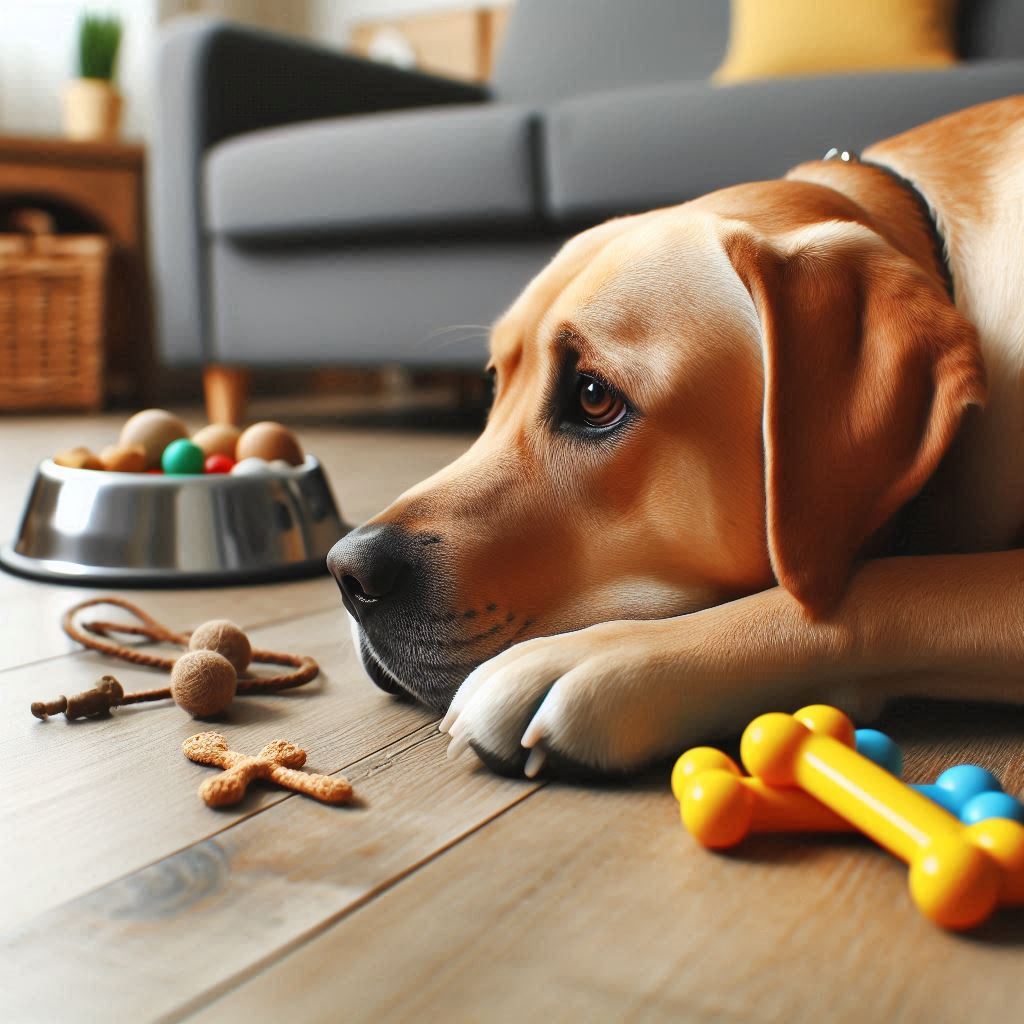
🐾 Can Dogs Get Depressed? – Understanding Canine Mental Health
Share
🐾 Can Dogs Get Depressed? – Understanding Canine Mental Health
We’ve all heard of the term “man’s best friend,” but can our dogs experience emotions as complex as depression? While our furry companions may not have the same mental health struggles as humans, they can absolutely experience emotional challenges, including depression. In this blog, we’ll dive into the signs of dog depression, what causes it, and how you can help your dog feel their best.
What Is Canine Depression? 🐕
Canine depression is not just about your dog feeling a little sad. Just like humans, dogs can experience a range of emotions that can affect their overall well-being. Depression in dogs can occur when they are overwhelmed by stress, grief, or a significant change in their environment. This can lead to symptoms like loss of interest in activities they usually enjoy, a decrease in energy, and even changes in eating or sleeping habits.
What Causes Depression in Dogs? 🤔
There are several factors that can contribute to a dog’s mental health struggles, and understanding the root causes can help you support your pup in times of distress.
1. Major Life Changes 🏡
Moving to a new home, a change in family dynamics (such as a new baby or pet), or even the loss of a beloved family member (two-legged or four-legged) can trigger feelings of sadness in dogs.
How it Affects Them: Dogs thrive on routine, so when that routine is disrupted, they may feel confused, anxious, or even lonely.
2. Lack of Exercise or Mental Stimulation 🐾
Dogs need regular physical and mental activity to stay happy. If they aren’t getting enough walks, playtime, or stimulation, they may begin to exhibit symptoms of depression.
How it Affects Them: Without proper exercise, a dog can become lethargic, disinterested, and even destructive. Boredom can trigger stress, which may result in depression.
3. Health Issues 🏥
A physical illness or chronic pain can also contribute to a dog’s emotional state. Dogs often hide pain or discomfort, so a health issue may go unnoticed until it becomes severe.
How it Affects Them: When a dog is in pain, it may lose interest in things they normally enjoy, such as eating, playing, or interacting with their family.
4. Separation Anxiety 🐕💔
Some dogs may struggle with separation anxiety, which occurs when they become overly distressed when left alone. This can lead to symptoms similar to depression, such as whining, destructive behavior, and a general sense of distress.
How it Affects Them: Dogs with separation anxiety may feel abandoned or insecure when left alone, leading to emotional instability.
Signs Your Dog May Be Depressed 🐶💭
So how do you know if your dog is feeling down? Look for these common signs of depression in dogs:
1. Changes in Appetite or Eating Habits 🍽️
Just like humans, depressed dogs may lose interest in food. If your dog isn’t eating as much or seems disinterested in their meals, it could be a sign that something is wrong.
2. Lethargy or Low Energy 🛋️
Depressed dogs may show a significant drop in energy levels. If your usually playful pup is now uninterested in walks, games, or anything else they once enjoyed, it could be a red flag.
3. Withdrawal or Hiding Away 🐾
If your dog starts to retreat to their bed or hides in a quiet space more often than usual, they may be feeling down. This withdrawal behavior can be a sign of depression.
4. Excessive Sleeping 😴
While dogs do sleep a lot, sudden increases in sleep or excessive napping could be a symptom of depression.
5. Unexplained Changes in Behavior 🐕💥
If your dog starts acting out of character—becoming more aggressive, anxious, or destructive—this could also be a sign of emotional distress.
How to Help a Depressed Dog 🐾💖
If you notice any of these signs, it’s important to take action. Here are a few ways you can help your dog feel better:
1. Create a Routine 🗓️
Dogs feel most secure when they know what to expect. Try to keep your dog’s daily routine as consistent as possible, including feeding, walks, and playtime.
2. Provide Plenty of Exercise and Mental Stimulation 🏃♂️🧠
Make sure your dog is getting plenty of physical exercise and mental stimulation. Take them on regular walks, play games, and provide puzzle toys to keep their minds engaged.
3. Give Extra Love and Attention 💕
Sometimes, all your dog needs is some extra TLC. Spend more time with them, offer extra cuddles, and let them know you’re there for them. You might even consider bringing them to a dog-friendly social setting to help lift their spirits.
4. Visit the Veterinarian 🐕💉
If you suspect your dog’s depression might be related to an underlying health issue, it’s essential to visit a vet for a check-up. A veterinarian can rule out any medical conditions that might be causing the symptoms and help determine the best course of action.
5. Consider Professional Help 🧑⚕️
If your dog’s depression is severe or not improving, it may be time to consult a professional dog trainer or behaviorist. They can provide insight into your dog’s emotional state and offer advice tailored to your pup’s needs.
Final Thoughts: Supporting Your Dog’s Mental Health 🐶💖
Just like humans, dogs can experience emotional distress, including depression. By recognizing the signs and understanding the potential causes, you can help your dog overcome their mental health challenges. With proper care, attention, and support, your dog can return to their happy, playful self in no time!
Want to show your pup how much you love them? Check out our dog-themed apparel and accessories at CyberMutz.com for stylish, high-quality products that celebrate your bond!
